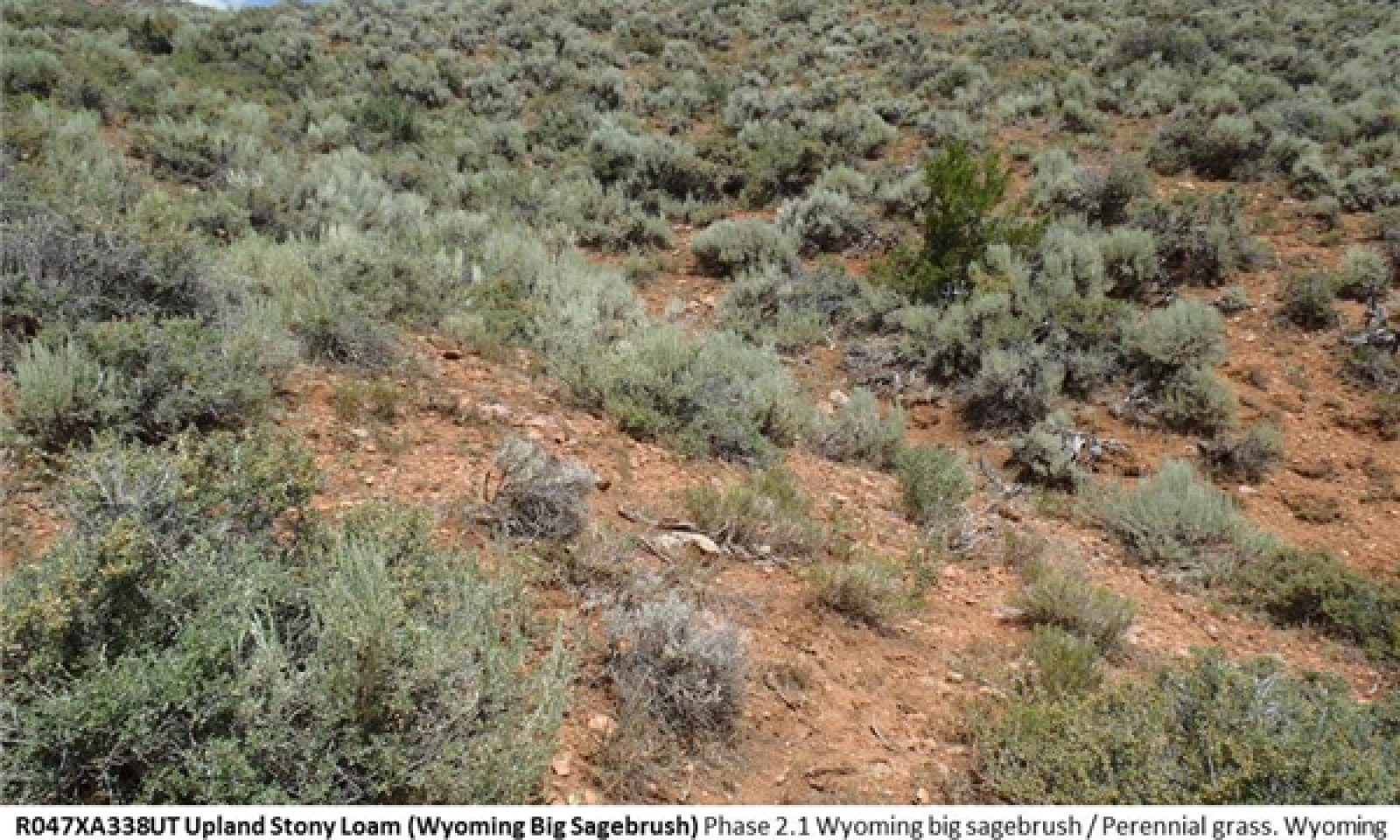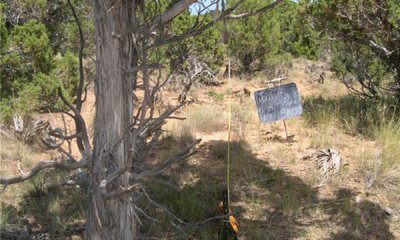
Upland Stony Loam (Wyoming big sagebrush)
Scenario model
Current ecosystem state
Select a state
Management practices/drivers
Select a transition or restoration pathway
-
Transition T1a
non-native species are introduced
More details -
Transition T2a
Utah juniper becomes co-dominant - lack of fire
More details -
No transition or restoration pathway between the selected states has been described
Target ecosystem state
Select a state
Description
The Reference State is a description of this ecological site just prior to Euro-American settlement but long after the arrival of Native Americans. The description of the Reference State was determined by NRCS Soil Survey Type Site Location information and familiarity with rangeland relict areas where they exist. The Reference State would have been characterized as a shrub steppe dominated by Wyoming big sagebrush (Artemisia tridentata ssp. wyomingensis) and having a rich native perennial herbaceous understory. The relative abundance of Wyoming big sagebrush and its perennial herbaceous understory on these sites would have depended on the amount of time elapsed since the last wildfire. Wildfire (1.1a) would have reduced Wyoming big sagebrush dominance, allowed for a temporary increase in disturbance-following shrubs when present (1.3), and allowed native perennial herbs to become temporarily dominant (1.1). In the absence of wildfire (1.2a), Wyoming big sagebrush would have become dominant, other shrubs would have become relatively less abundant, and the perennial herbaceous understory would have become relatively sparse (1.2).
Submodel
Description
The Invaded State is similar to the reference state in plant community structure and function, but it allows for the presence of some non-native invasive species. The lengthening of fire-return intervals since the time of European settlement also allows a new community phase in this state, which is characterized by the establishment and growth of Utah juniper, with minimal reductions in native woody and herbaceous species.
Submodel
Description
This state is characterized by Utah juniper dominance of both ecological function and community structure. Juniper may continue to increase in this state until very few of the dominant reference species remain. This state may not be subject to extreme erosion due to the rockiness of the soil, but large bare patches may be subject to some localized accelerated erosion. Removal of juniper will require seeding of some species given the absence of seed production by native grasses and shrubs in this state.
Submodel
Mechanism
This transition occurs as non-native species are introduced to the site. The invaded state is similar to the reference state in plant community structure and ecological process, but the presence of domestic livestock and exotic plants decreases the resilience of the site.
Mechanism
This transition occurs when Utah juniper becomes co-dominant in the plant community. Indicators are decreased perennial grasses and shrubs, increased bare ground, and multiple age classes of Utah juniper (indicating repeated recruitment events on the site). It is unclear at which point state 2 crosses an irreversible threshold into state 3, but the inability of the site to carry a fire, or the lack of perennial grass and shrub seed/propagules following a wildfire are useful qualitative indicators.
Model keys
Briefcase
Add ecological sites and Major Land Resource Areas to your briefcase by clicking on the briefcase (![]() ) icon wherever it occurs. Drag and drop items to reorder. Cookies are used to store briefcase items between browsing sessions. Because of this, the number of items that can be added to your briefcase is limited, and briefcase items added on one device and browser cannot be accessed from another device or browser. Users who do not wish to place cookies on their devices should not use the briefcase tool. Briefcase cookies serve no other purpose than described here and are deleted whenever browsing history is cleared.
) icon wherever it occurs. Drag and drop items to reorder. Cookies are used to store briefcase items between browsing sessions. Because of this, the number of items that can be added to your briefcase is limited, and briefcase items added on one device and browser cannot be accessed from another device or browser. Users who do not wish to place cookies on their devices should not use the briefcase tool. Briefcase cookies serve no other purpose than described here and are deleted whenever browsing history is cleared.
Ecological sites
Major Land Resource Areas
The Ecosystem Dynamics Interpretive Tool is an information system framework developed by the USDA-ARS Jornada Experimental Range, USDA Natural Resources Conservation Service, and New Mexico State University.





